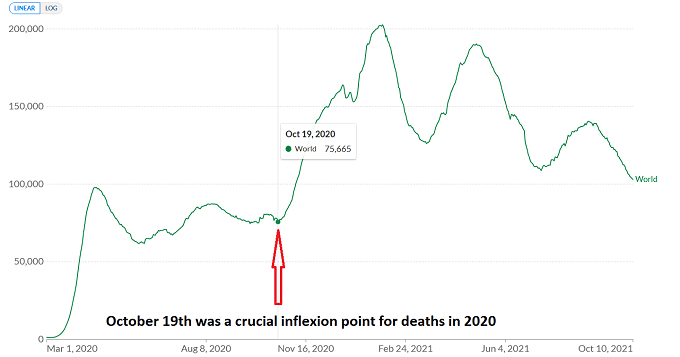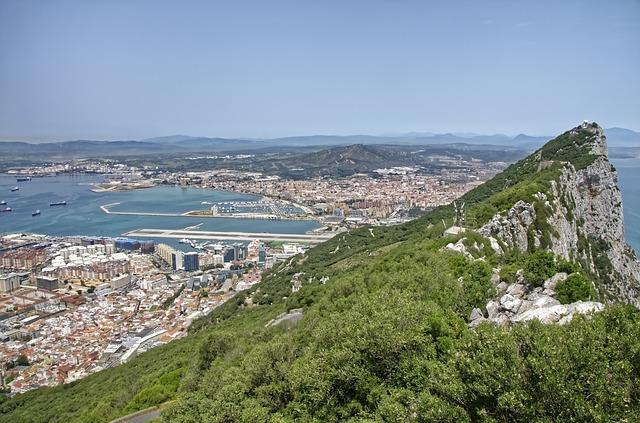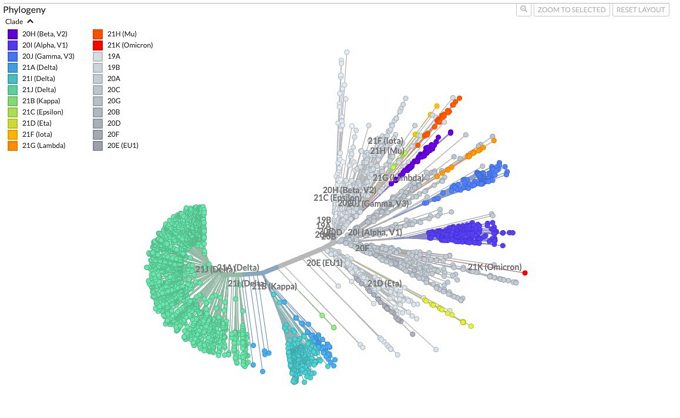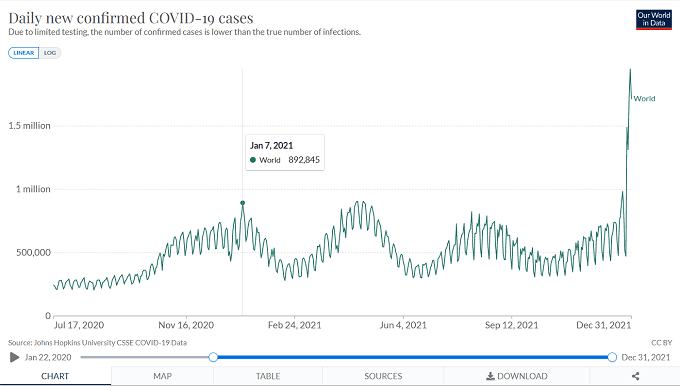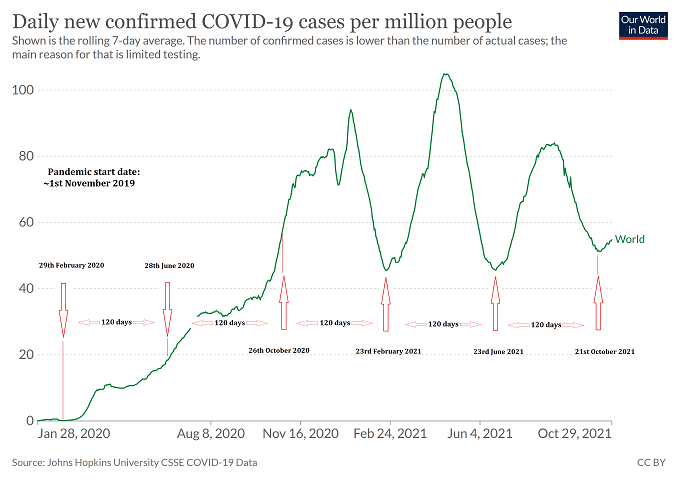
Will Omicron break the 120-day Sars-CoV-2 global wave cycle?
Will the new Omicron variant break the 120-day global Sars-Cov-2 wave cycle? It’s a question we have been determined to answer since the Omicron outbreak started in late November 2021.
We have previously posted about the 120 days global wave cycle here, but you can get an idea of how it works by looking at the chart below
So will the new super-infectious Omicron variant break the global 120-day Sars-CoV-2 wave cycle that has been such a defining feature of this pandemic?
We don’t think that Omicron will break the cycle because we’re pretty sure that the wave cycle timing is hard-coded into the virus. If we’re right, then the current global wave has just a few days left until it peaks.
The latest World chart shows the current global wave nearing a crest.
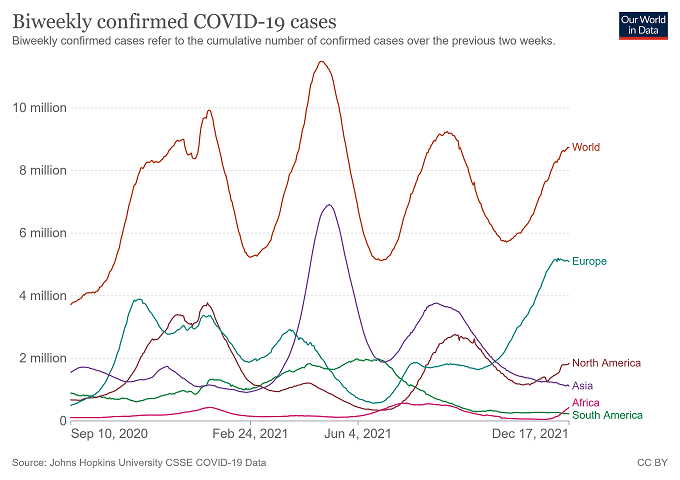
With a variant as infectious as Omicron having just been discovered, it seems completely counterintuitive to suggest that the pandemic is about to start to quieten down again, but we think that is exactly what will happen in a few days time.
We think the peak of the global wave will be somewhere between the 23rd December 2021 and the 3rd January 2022, as it was last year. It’s difficult to be more precise on the timing as the only previous example we have to work with, the winter wave of 2020/2021, was so distorted by national lockdowns and other non-pharmaceutical interventions that it’s impossible to determine when the peak of that wave was.
If we had to hazard a guess, however, we think that the current global wave peak is more likely to be around Christmas day 2021 than after the new year.
So what does that mean in terms of existing national waves?
The Scandinavian wave, seen below, is perhaps the easiest to predict at the moment. Denmark, Norway and Finland are all seeing extraordinary Covid growth rates because of Omicron, but we think they will soon start to subside, roughly in line with the global wave, so peaking around Christmas day, then starting to decline.
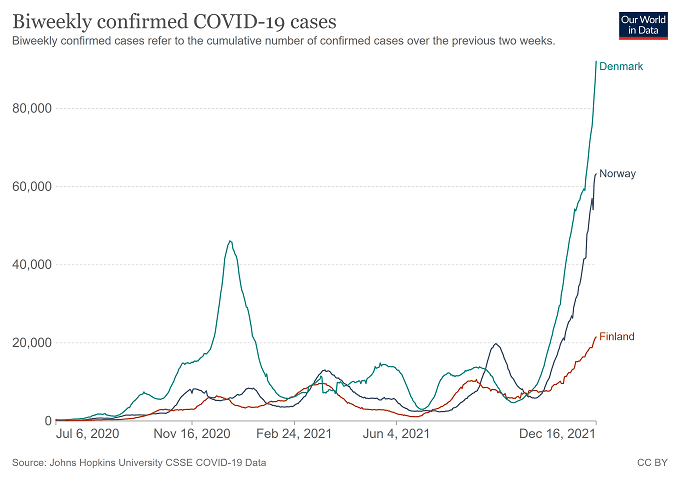
As for the UK, the world’s Covid basket case, well, following their “Freedom Day” experiment of allowing the virus to run riot throughout the entire summer and autumn, it’s impossible to tell where one Covid wave starts and another ends, so predicting a wave peak and an end to their current difficulties is impossible. What is certain, however, is that the Freedom Day experiment did nothing to reduce the size of the winter wave which was its intended purpose.
The net result of Freedom Day was to shorten the lives of tens of thousands of people, and maim hundreds of thousands more with long Covid. “Freedom from life and freedom from good health” day would have been more accurate description of the event.
As we said in this post in on 16th July 2021:
Boris Johnson’s “Freedom Day” plan to create herd immunity in the UK by having one huge summer Delta wave has been rightly criticised from scientists from around the globe. According to the UK’s Chief Medical Officer, the idea is that a Covid-19 wave in the summer will prevent an even worse wave in the winter. Our prediction is that Johnson will simply get two waves for the price of one – the wave he is promoting now, by removing all mitigations, and an even worse winter wave caused by yet another new variant.
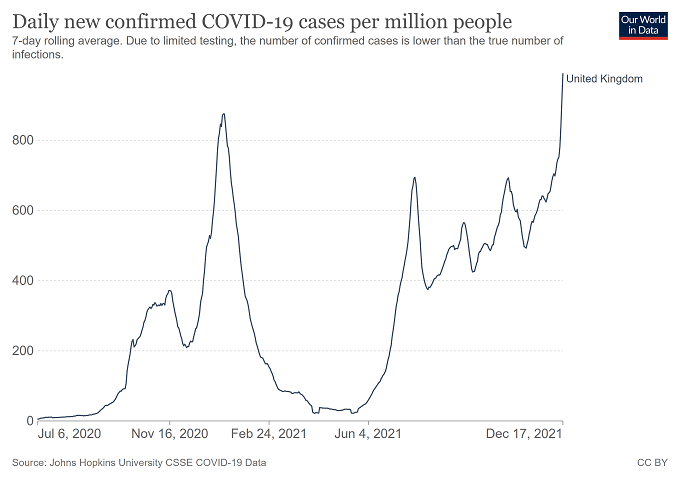
Possible bad news alert: if Omicron DOES break the 120-day global wave cycle, it means we will be in two simultaneous pandemics. In that case, the human race is utterly screwed.
Possible good news alert: If the global wave breaks within the next few days, in terms of total case numbers, it could be the fourth wave in a row that has declined in size – i.e, the waves are getting smaller as time goes on.
Evidence of two global Covid waves in 2020, and estimating the pandemic start date
